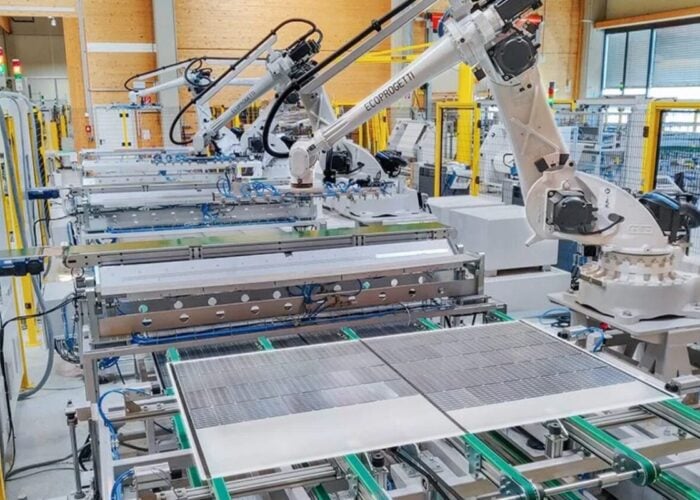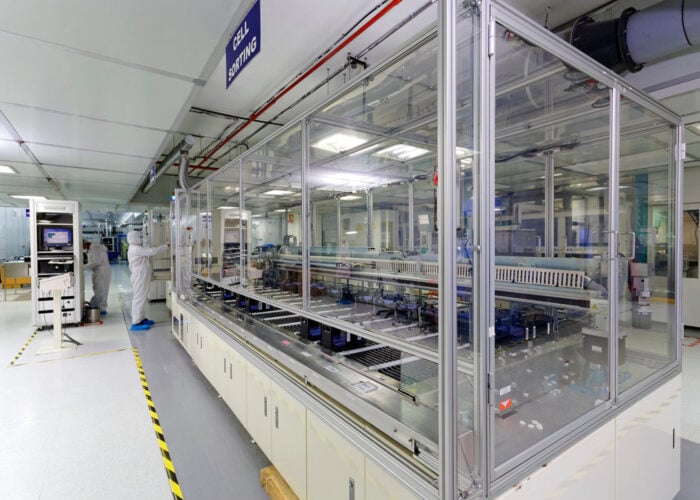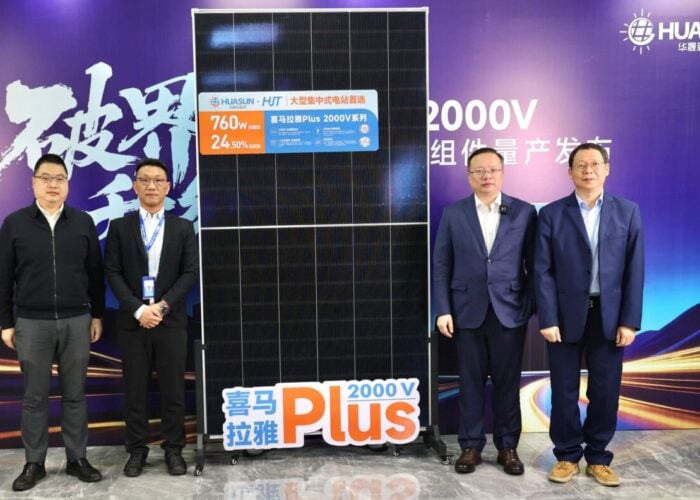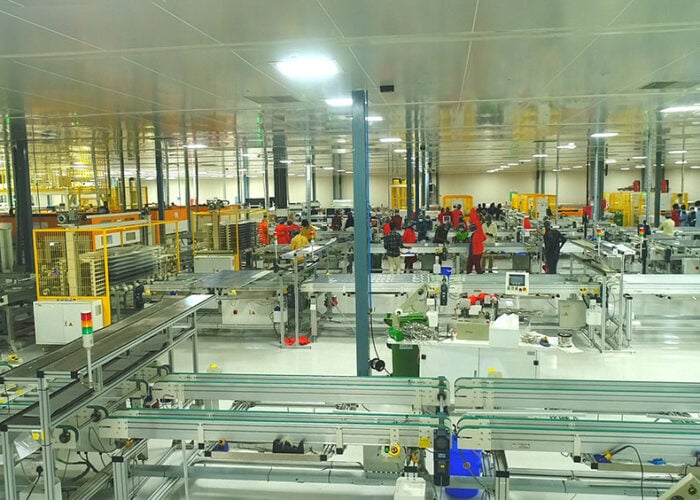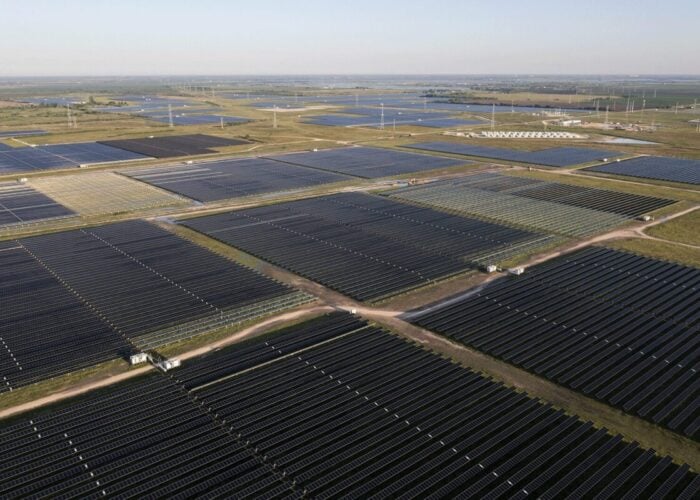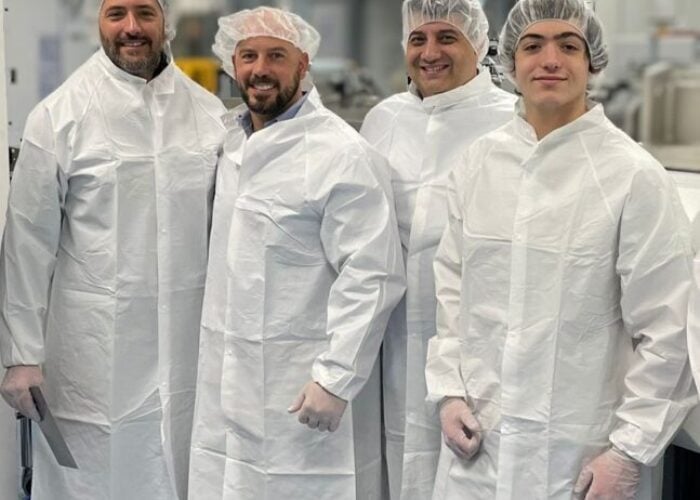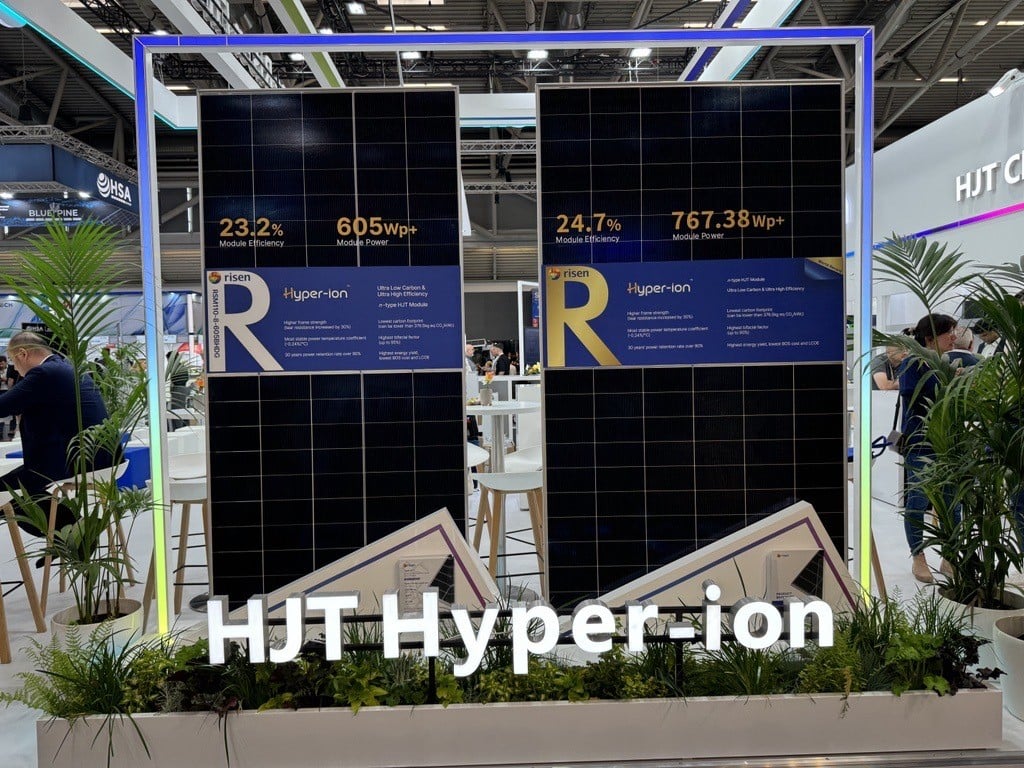
Chinese solar PV module manufacturer Risen Energy has achieved a 24.7% conversion efficiency and 767.38Wp maximum power output on its heterojunction (HJT) Hyper-ion modules.
However, the company did not disclose the name of the third-party organisation that made the module efficiency test. When the company achieved a maximum output of 741.456W and a conversion rate of 23.89% for an HJT module in early 2023, the testing was certified by TÜV SÜD.
Try Premium for just $1
- Full premium access for the first month at only $1
- Converts to an annual rate after 30 days unless cancelled
- Cancel anytime during the trial period
Premium Benefits
- Expert industry analysis and interviews
- Digital access to PV Tech Power journal
- Exclusive event discounts
Or get the full Premium subscription right away
Or continue reading this article for free
With this latest conversion efficiency record, Risen Energy breaks the 24% barrier for HJT modules and increases by 0.6 percentage points fellow solar PV manufacturer Huasun’s record conversion efficiency. Last November, Huasun achieved a 24.16% conversion efficiency and a power output of 750.544W for its HJT module.
“As the latest product under the carbon emission reduction strategy to achieve ‘dual carbon’ goals, our HJT Hyper-ion Modules are innate in multiple advantages, encompassing the concept of ‘four highs and four lows’ – high power output, high electricity generation, high conversion efficiency, and high reliability, along with low degradation, low temperature coefficient, low carbon footprint, and low levelized cost of electricity (LCOE),” said Liu Yafeng, VP of global PV Research Institute at Risen Energy.
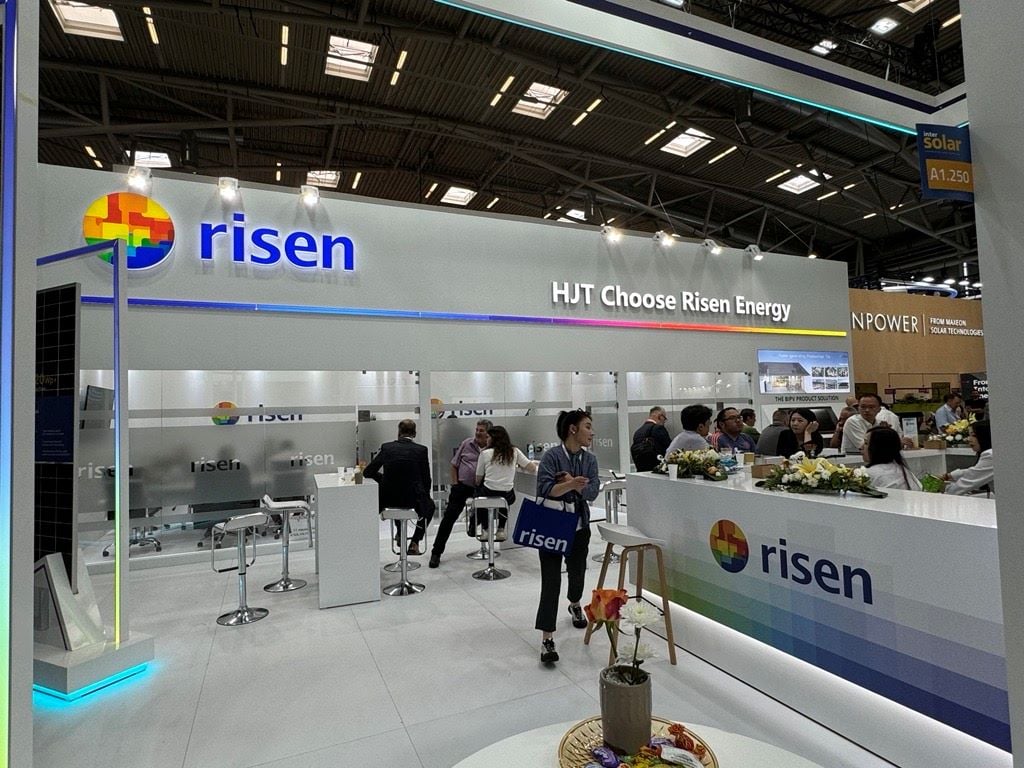
Moreover, Risen Energy’s HJT Hyper-ion module line have passed several IEC standards and environmental reliability tests, including IEC TS 63126, IEC TS 63209-1, and IEC 62938-82. Shipments of the Hyper-ion module line have exceeded 4GW shipments so far.
Risen Energy has recently been ranked among the top 12 solar PV manufacturers in Wood Mackenzie’s latest module manufacturer rankings, sitting at number five with a score of 78.

